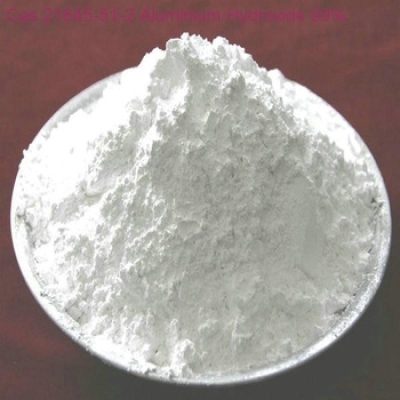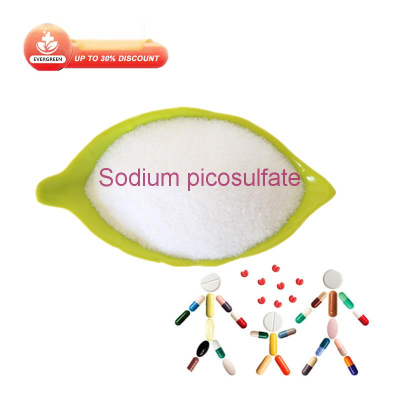-
Categories
-
Pharmaceutical Intermediates
-
Active Pharmaceutical Ingredients
-
Food Additives
- Industrial Coatings
- Agrochemicals
- Dyes and Pigments
- Surfactant
- Flavors and Fragrances
- Chemical Reagents
- Catalyst and Auxiliary
- Natural Products
- Inorganic Chemistry
-
Organic Chemistry
-
Biochemical Engineering
- Analytical Chemistry
- Cosmetic Ingredient
-
Pharmaceutical Intermediates
Promotion
ECHEMI Mall
Wholesale
Weekly Price
Exhibition
News
-
Trade Service
For medical professionals only
Difficulty swallowing and chest pain appear, and it could also be this rare disease!
A middle-aged patient with persistent dysphagia and chest pain, no obvious abnormalities were seen by esophageal gastroduodenoscopy, and during the consultation, the patient's dysphagia and chest pain symptoms worsened.
Case reports: dysphagia, chest pain
The patient, a 39-year-old woman, was admitted to the hospital
with "dysphagia and chest pain while eating".
Previous history
of migraine and chronic abdominal pain.
Deny discomfort
such as choking, coughing, or acid reflux.
4 years ago, due to abdominal pain, the gastroscopy showed gastritis, and patients were advised to pay attention to diet
.
This time the difficulty of swallowing is further exacerbated by eating, accompanied by intermittent chest pain
.
Esophagogastroduodenoscopy is not significantly abnormal
Laboratory tests showed no abnormalities, and transesophageal gastroduodenoscopy (EGD) showed mild inflammatory lesions, no bleeding, erosions, etc
.
Pathologic biopsy shows benign squamous epithelium
.
None of the abdomen was abnormal.
ECG and troponin I levels were not significantly abnormal.
What causes patients to have difficulty swallowing and chest pain?
To confirm the diagnosis, we arranged for a barium esophageal examination, which showed exogenous compression on the posterior esophagus of the thoracic spine segments 3-4 (T3-T4 segments) without contrast retention (Figure 1).
Considering that the patient also had chest pain symptoms, we arranged for the patient to have chest CT, and the results showed that the right subclavian artery was abnormal, resulting in a slight flattening of the proximal esophagus, consistent with the level of T3-T4 compression on the barium esophageal diagram (Figure 2).
During the presentation, the patient reported worsening dysphagia and chest pain, and was subsequently referred to cardiothoracic surgery
.
(Figure 1) (Fig.
2)
Cardiac angiography showed that the right subclavian artery was abnormal at the origin of the left subclavian artery, and there was no obvious stenosis
.
Patients underwent thoracic endovascular aorta repair to remove the abnormal right subclavian artery and carotid artery to subclavian bypass
.
After 1 year of follow-up, the patient's dysphagia and chest pain basically disappeared
.
discuss
Dysphagia caused by compression of the esophagus by malformed arteries was first described in 1761 by surgeon David Beford, who identified a fatal case of dysphagia.
[1]
Dysphagia under esophageal compression is a congenital aortic arch abnormality characterized by abnormalities in the right subclavian artery that compress the esophagus, resulting in dysphagia
.
Abnormal right subclavian artery is more common
than abnormal left subclavian artery.
The incidence of right subclavian artery abnormalities ranges from 0.
4 to 1.
8 percent and is characterized by the absence of a brachiocephalic trunk, which originates directly in the aortic arch rather than in the brachioplanocephalic trunk and compresses the esophagus [2,3].
According to the Edwards developmental model [4], the ectopic right subclavian artery is the result of partial degenerative disruption of
the right fourth arterial arch between the arteries.
It is generally divided into 3 types [5]:(1) from the back of the esophagus from the bottom left to the right upper arm, accounting for about 80%; (2) Pass between the esophagus and trachea, from the lower left to the right up oblique to the right upper arm, accounting for about 15%; (3) Walk in front of the trachea, from the lower left to the right up oblique to the right upper arm, accounting for about 5%.
▌ Clinical symptoms: Most patients have no obvious symptoms, but because the beginning of the ectopic right subclavian artery can gradually increase with age, coupled with vascular sclerosis, middle-aged and elderly people will have symptoms
of dysphagia, which is easily confused
with esophageal cancer.
Symptoms usually occur around the age of 50, with decreased esophageal mobility and difficulty swallowing being the most common symptoms
.
Other symptoms include dyspnea, and chest pain due to arterial compression of the esophagus or trachea [6].
Despite the difficulty of swallowing secondary to proximal esophageal compression over the course of his clinical practice, the patient did not cough
.
Malformed arterial stenosis can also manifest as lameness, differences in blood pressure in the arm, and Raynaud's phenomenon in the right hand [7].
▌Diagnosis and treatment
of EGD and esophageal barium meal remain the main tools
for evaluating esophageal dysphagia.
Initial diagnosis can be made by barium esophageal angiography, followed by chest CT or magnetic resonance imaging, with or without angiography, to help determine vascular anatomy and surgical options [8,9].
Previously reported findings of EGD include external pulsatile or external compression of the esophagus, but endoscopic diagnosis can be ignored [10].
Treatment includes acid suppression, dietary modification, and surgery [11].
total
knot
Dysphagia caused by exogenous compression of the esophagus by ectopic subclavian artery is a rare disease, clinically most patients have no obvious symptoms, but because the beginning of the ectopic right subclavian artery can gradually increase with age, coupled with vascular sclerosis, middle-aged and elderly people will have symptoms of dysphagia, which is easily confused with esophageal cancer, and requires special attention
.
References:
[1] Asherson N.
David Bayford.
His syndrome and sign of dysphagia lusoria.
Ann R Coll Surg Engl.
1979; 61(1):63–67.
[2] Mahmodlou R,Sepehrvand N,Hatami S.
Aberrant right subclavian artery:a life-threatening anomaly that should be considered during esophagectomy.
J Surg Tech Case Rep.
2014; 6(2):61–63.
[3] Brown DL,Chapman WC,Edwards WH,Coltharp WH,Stoney WS.
Dysphagia lusoria:aberrant right subclavian artery with a Kommerell's diverticulum.
Am Surg.
1993; 59(9):582–586.
[4] Macdonald F E,Pearce O,Thavanesan K,et al.
Subclavian steal syndrome-a diagnostic challenge.
International journal of stroke:2019(3):14.
[5] Masucci A,Nappi C,Sglavo G,et al.
Aberrant right subclavian artery:incidence and correlation with other markers of Down syndrome in second-trimester fetuses.
,2012,39(2):191-195.
[6] Daher H,Hadidi A.
S.
Dysphagia lusoria presenting as epigastric pain.
BMJ Case Rep.
2017; 2017:bcr2017223687.
[7] Tuleja A,Baumgartner I,Schindewolf M.
Claudication caused by stenosis of arteria lusoria—case report and review of literature.
Clin Med Insights Case Rep.
2019; 12:1179547619842187.
[8] Bennett AL,Cock C,Heddle R,Morcom RK.
Dysphagia lusoria:a late onset presentation.
World J Gastroenterol.
2013; 19(15):2433–2436.
.
[9] Epperson MV,Howell R.
Dysphagia lusoria:problem or incidenta-loma? Curr Opin Otolaryngol Head Neck Surg.
2019; 27(6):448–452.
[10] Janssen M,Baggen MG,Veen HF,et al.
Dysphagia lusoria:clinical aspects,manometric findings,diagnosis,and therapy.
Am J Gastroenterol.
2000; 95(6):1411–1416.
[11] Fukuhara S,Patton B,Yun J,Bernik T.
A novel method for the treatment of dysphagia lusoria due to aberrant right subclavian artery.
Interact Cardiovasc Thorac Surg.
2013; 16(3):408–410






